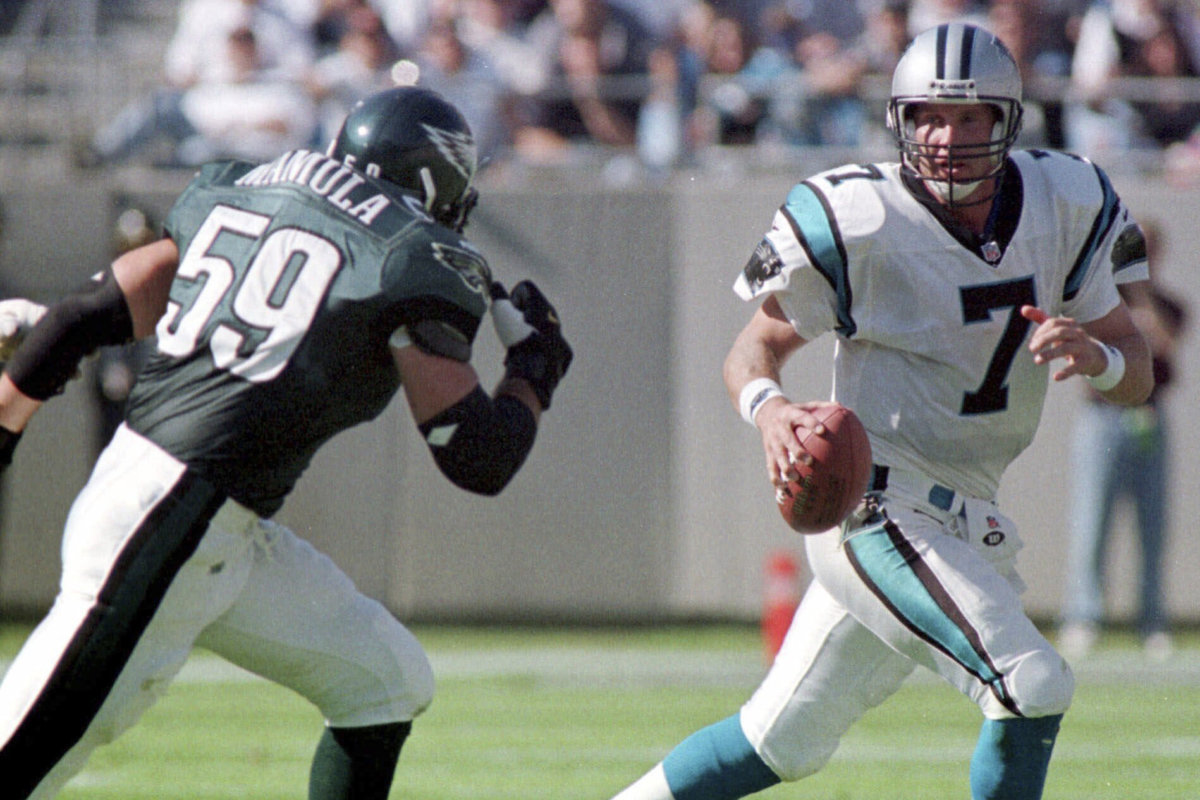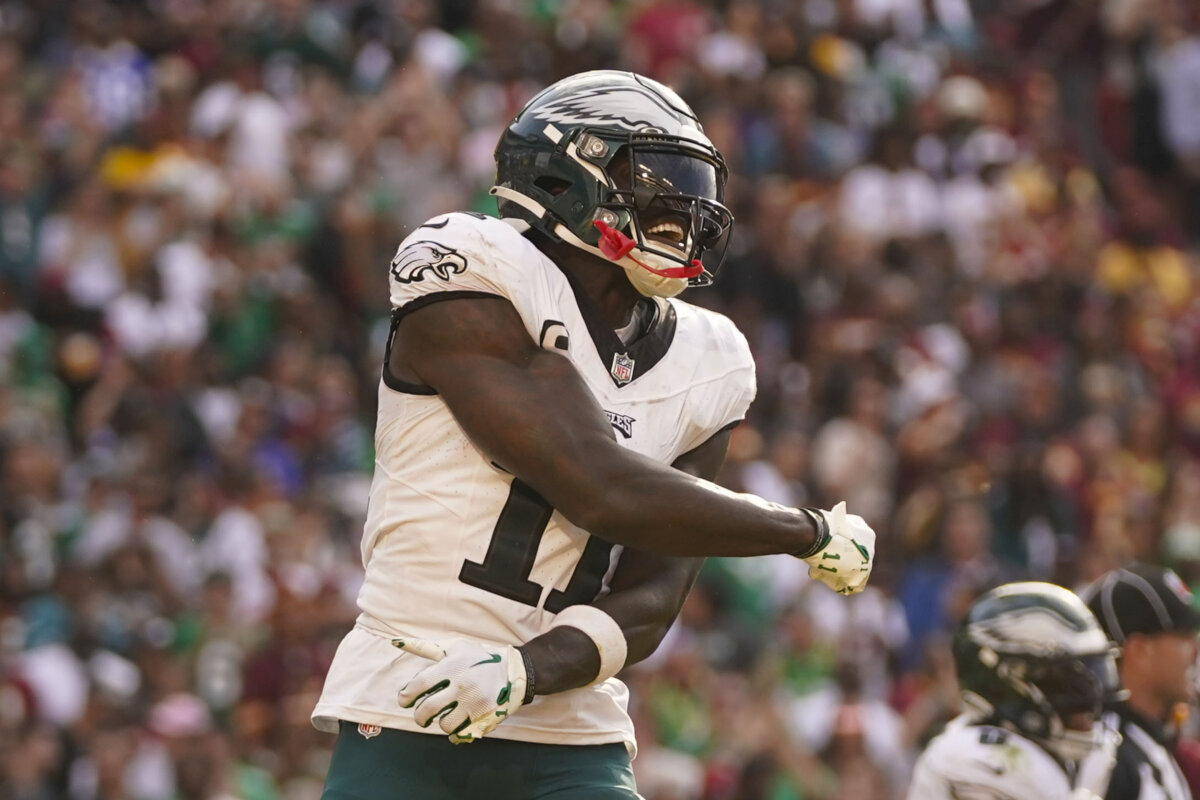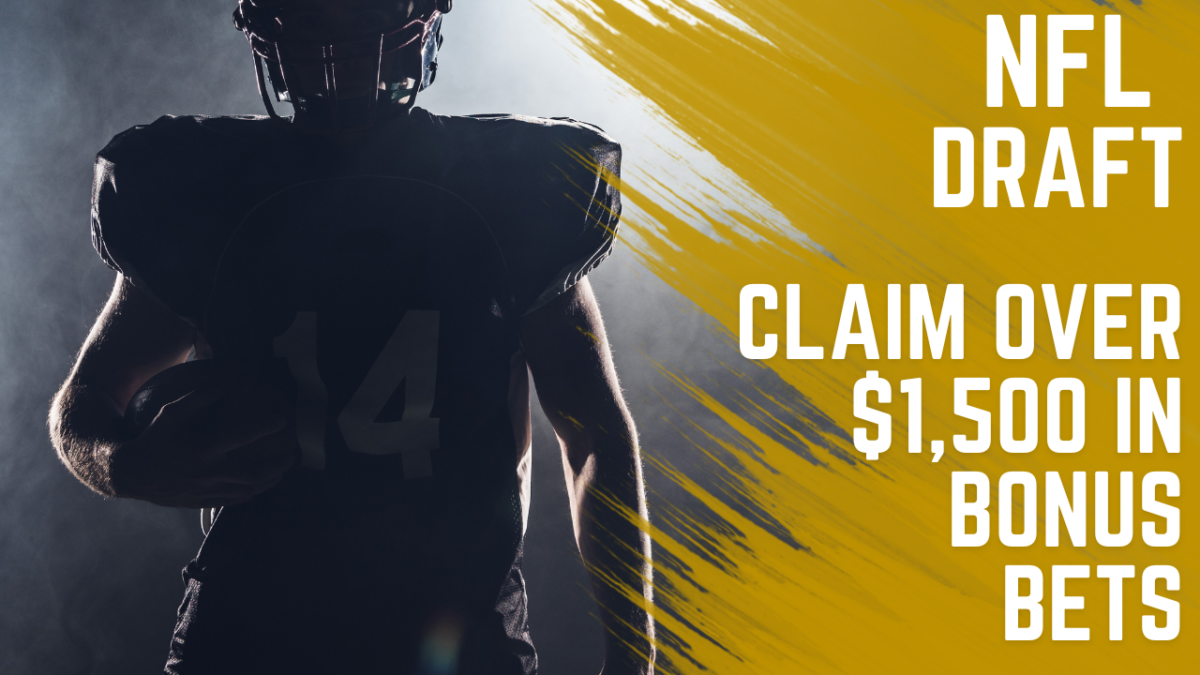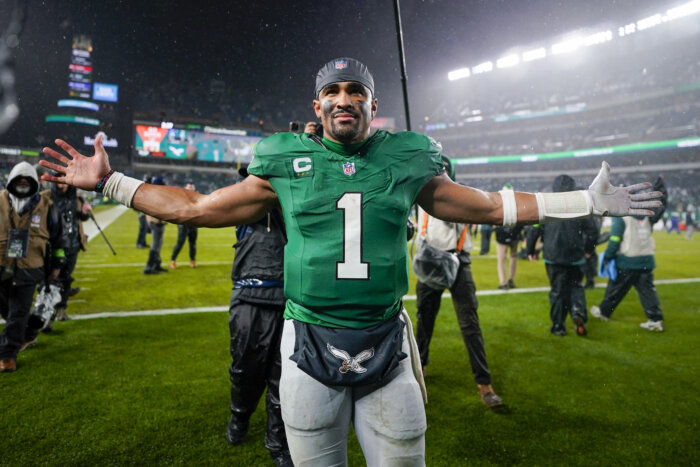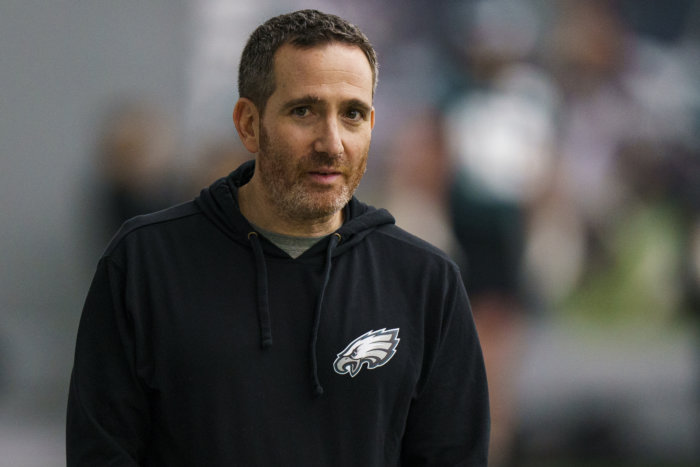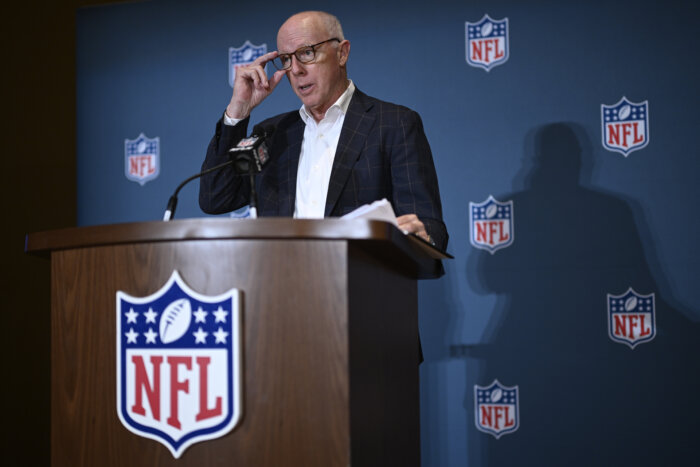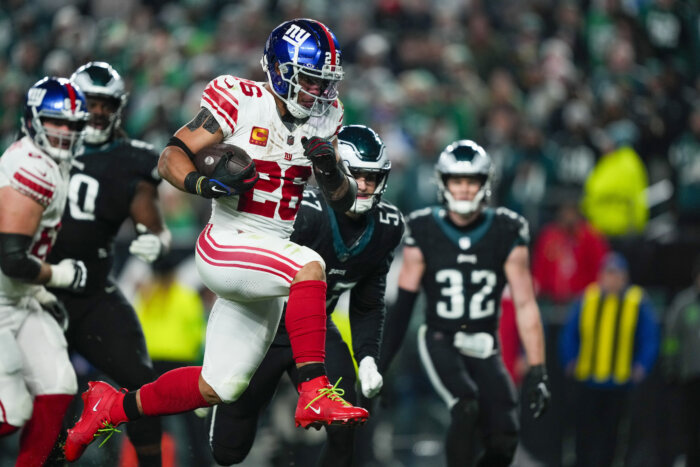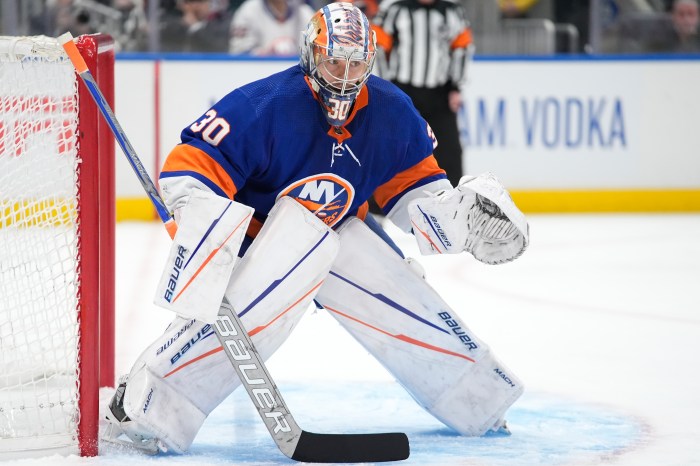By ARNIE STAPLETON AP Pro Football Writer
Long before the NFL’s annual scouting combine became a prime-time football fix for fans ahead of free agency and the draft, Mike Mamula absolutely killed it as a combine trailblazer in 1995.
He was among the first players to train specifically for the staple of tests he’d face at the combine: the 40-yard dash that measures speed, the three-cone drill that calculates agility and the 225-pound bench press that gauges strength and stamina.
After his impressive showing in Indy, Mamula rocketed into the first round, where the Philadelphia Eagles traded the 12th overall pick and two second-round selections to Tampa Bay so they could move up five spots and get the Boston College defensive end at No. 7.
Mamula proved more of a workout warrior than Sunday star in his solid five-year career with the Eagles, illustrating the inexact nature of projecting professional success at the combine, where studs can eventually turn out to be duds and flops can turn out to be outstanding players.
Although some prospects skip certain components of the combine and choose to show off in more familiar surroundings at their college pro day or in visits with specific teams, the vast majority now target the week in Indianapolis just like Mamula did.
They train like prizefighters getting ready for their big fight, pumping iron and cutting carbs to stand out amongst their peers — about a third of the invitees in any given year go undrafted while a few dozen snubs take their places in the three-day, seven-round draft in April.
This focus helps produce memorable moments of athletic power and prowess at the combine every year.
There was wide receiver John Ross III limping across the finish line after blazing to a record 4.22-second time in the 40-yard dash in 2017.
His is the most talked about 40 since Deion Sanders’ 4.27-second hand-clocked time in 1989 when he kept running straight through the tunnel as scouts clapped.
“I don’t even believe I stretched,” Sanders recalled years later. “You wanna know why? Because I never seen a cheetah stretch before he go get his prey.”
Whereas Sanders became a Pro Football Hall of Famer and two-sport star, Ross had a mostly forgettable five-year NFL career in which he missed more games than he played after the Cincinnati Bengals selected him ninth overall in the draft.
Orlando Brown Jr. had the opposite experience. The only thing that went right for the massive tackle from Oklahoma at the 2018 scouting combine was the vote of confidence from his Heisman Trophy-winning teammate.
“When are you ever going to watch Orlando Brown run 40 yards down the field?” quarterback Baker Mayfield asked that week. “You can watch last year’s tape and see he allowed zero sacks. I’d say that’s pretty important for a left tackle.”
Measures matter, too, however, and he fell from a projected first-rounder to the third round of the draft, where the Baltimore Ravens took a flyer on him with the 83rd overall pick.
The nearly 6-foot-8, 345-pound left tackle managed just 14 reps on the 225-pound bench press, the lowest total of any lineman who lifted at the combine that year.
Things only got worse for the son of former Browns and Ravens right tackle Orlando Brown a day later when he lumbered through the 40-yard dash in 5.85 seconds. Even by big O-linemen standards, that’s sloth-like slow, and it was the slowest of anyone at that year’s event.
Brown, whose broad and vertical jumps were also the lowest of all players, was undeterred by his wretched week at the combine.
“I’ve been fat my whole life,” he explained. “I wish I was fast.”
Brown, however, made the Pro Bowl in his second season and has made every one since. Last month he won a Super Bowl ring while anchoring Kansas City’s stout offensive line, and he’s in line for another huge paycheck this spring.
Another player who looked overmatched at his combine was none other than seven-time Super Bowl-winning quarterback Tom Brady.
We’ve all seen the official combine photo of the scrawny Brady with uneven bangs standing expressionless in baggy shorts at the 2000 combine where he was a late-round prospect hoping for a chance.
Brady ran the 40 in a turtle-like 5.28 seconds and posted an unimpressive 24 1/2-inch vertical jump.
The only radar he was on was that of the New England Patriots, where head coach Bill Belichick and general manager Scott Pioli were just months into their new jobs and targeted a QB in the later rounds.
They selected Brady in the sixth round after 198 other players were drafted, including seven quarterbacks.
Brady retired last month as the GOAT, a stark reminder that projecting pro success will always be an inexact science and the NFL scouting combine doesn’t always make or break a player.



